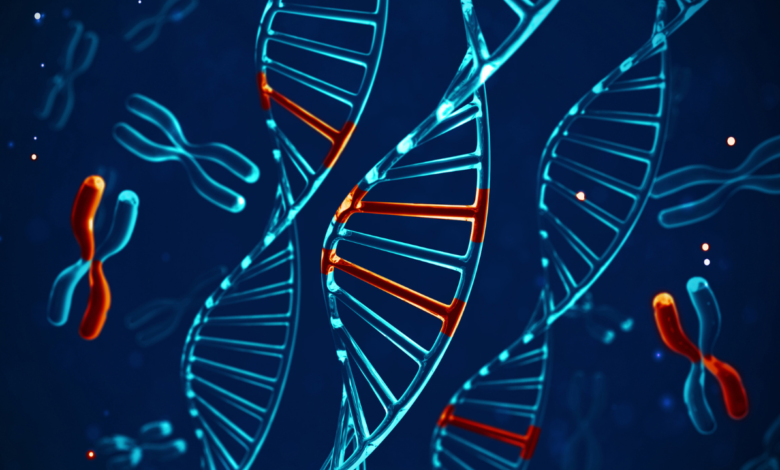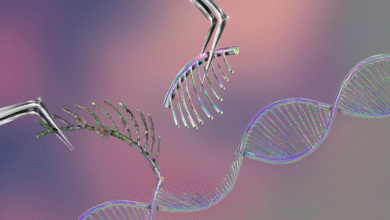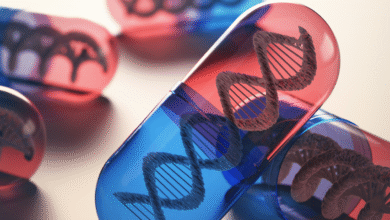Gene Therapy: Revolutionizing the Treatment of Genetic Diseases

What exactly is gene therapy and what types of diseases can it potentially treat?
Gene therapy is a medical approach that aims to treat or prevent disease by correcting the underlying genetic problem. This can involve replacing a mutated gene with a healthy copy, inactivating a malfunctioning gene, or introducing a new gene into the body to help fight disease. It holds promise for treating a wide range of genetic disorders, including cystic fibrosis, sickle cell disease, Huntington’s disease, as well as acquired diseases like certain cancers and HIV.
How does gene therapy work at a fundamental level within our cells?
At its core, gene therapy involves altering the genetic material within a patient’s cells. This is typically done by delivering a therapeutic gene (often carried by a vector, like a modified virus) into the target cells. Once inside the cell, the delivered gene can then be transcribed into RNA and translated into a functional protein, which can then correct the genetic defect or provide a new therapeutic function.
What are the different methods or approaches used to deliver therapeutic genes into cells?
Several methods are used to deliver genes, broadly categorized as in vivo (gene is delivered directly into the patient’s body) and ex vivo (cells are modified outside the body and then transplanted back). Common delivery vehicles, or vectors, include:
- Viruses: Modified viruses (like adeno-associated viruses, lentiviruses, and adenoviruses) are often used because they have a natural ability to enter cells. Their disease-causing genes are removed and replaced with the therapeutic gene.
- Non-viral methods: These include using lipids (fatty molecules) to encapsulate DNA, naked DNA injection, electroporation (using electrical pulses to create temporary pores in cell membranes), and gene guns (which physically shoot DNA-coated particles into cells).
Is gene therapy a one-time treatment or does it typically require repeated administrations?
Ideally, gene therapy would be a one-time, curative treatment. For some genetic disorders, this is the goal and has been achieved in certain cases, particularly with ex vivo therapies targeting long-lived cells. However, for other conditions, especially those affecting rapidly dividing cells or where the therapeutic effect wanes over time, repeated administrations might be necessary. The durability of gene therapy depends on factors like the stability of the delivered gene and whether the target cells are continuously replaced.
What are the potential risks and side effects associated with gene therapy?
While gene therapy holds great promise, there are potential risks, including:
- Immune response: The body’s immune system might react to the viral vector or the introduced gene.
- Off-target effects: The delivered gene might integrate into the wrong place in the genome, potentially disrupting other genes and leading to unforeseen consequences, such as cancer.
- Vector-related toxicity: The viral vector itself could cause harmful side effects.
- Overexpression of the therapeutic gene: Too much of the therapeutic protein could be produced, leading to adverse effects.
How is the safety and effectiveness of gene therapy treatments evaluated and regulated?
Gene therapy treatments undergo rigorous preclinical testing in laboratory and animal models to assess safety and efficacy before they can be tested in humans. Clinical trials are conducted in phases to evaluate safety, determine dosage, and assess effectiveness in patients. Regulatory agencies like the FDA in the United States and the EMA in Europe have strict guidelines and review processes for gene therapy products to ensure patient safety and therapeutic benefit.
What are the ethical considerations surrounding gene therapy, particularly germline editing?
Gene therapy raises several ethical considerations. Somatic gene therapy, which alters genes in non-reproductive cells, primarily affects the treated individual. However, germline gene therapy, which modifies genes in sperm or egg cells (or embryos), could be passed down to future generations, raising significant ethical debates about unintended consequences, the potential for “designer babies,” and the limits of human intervention in the germline.
What are the current limitations and challenges in the field of gene therapy?
Despite significant progress, gene therapy still faces challenges, including:
- Efficient and targeted gene delivery: Getting the therapeutic gene to the right cells and ensuring long-term expression remains a hurdle.
- Controlling gene expression: Regulating the level and duration of the therapeutic protein production is crucial.
- Minimizing immune responses: Developing strategies to avoid or manage immune reactions to vectors and transgenes is essential.
- Addressing complex multigenic diseases: Many common diseases are caused by multiple genes interacting with environmental factors, making gene therapy more complex.
- Cost and accessibility: Current gene therapies can be very expensive, limiting their availability to patients.





